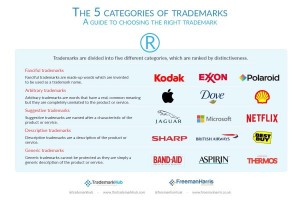In a supermarket, at peak hours, you either see closed entry doors or long queues. The same occurs in banks and call centers. How many times have you had to wait for a long time in line at a bank or on the phone to be answered? And how many of those times did you give up and leave?
When there are queues, the experience of buying and providing services is poor. It can even generate losses to the company.
When there is idleness, the owner of the establishment is wasting money, making his product or service less competitive in the market.
The need for an organization to measure how many people are required to perform a certain activity in its production process is not something new. The problem, in fact, is quite common – it is not an easy task.
Mathematical models have been used for a long time to try to solve this problem, however, what has changed today is that models have evolved and just knowing the number of people needed is not enough.
It is also necessary to define the daily and weekly workload of the employees, as well as the appropriate times for the beginning and end of the work shift.
How to use Workforce Management (WFM) to improve team productivity?
Studies carried out by Right Management reveal that motivated employees produce up to 50% more and are happier in their workplaces. In this way, WFM proves to be an ally for organizations that wish to raise their respective performances and improve the team’s productivity in a strategic way.
Advantages of Workforce Management
Workforce management exists because it allows the company some advantages:
- Optimization of customer service.
- Motivation and employee satisfaction.
- Assertive organization of costs and investments.
- High performance and more humanized management.
- Greater compliance (compliance with rules and legal norms).
- Optimization of personnel expenses.
- Time and productivity management.
- More agile and lean processes.
- Real development of new market and innovation differentials.
- Happier employees.
Activities and processes
Workforce management involves some activities and processes, such as:
- Sizing of staff by function.
- Recruitment and selection.
- Plan for jobs and wages.
- Project management.
- Career path.
- Payroll budget.
- Time management and control.
- Team and task management.
- Forecast sales and business variables.
- Distribution of employee schedules according to demand.
Implementation of Workforce Management
A solid WFM strategy starts with the definition of the requirements to fulfill each business task efficiently and safely. From this base, companies can use the work management software to determine demand-based forecasts, schedule the appropriate number of workers to accomplish a given task, measure team performance and provide feedback and incentives to each team member.
It is worth mentioning that WFM focuses not only on employee performance and programming, but also determines how companies should invest in their employees. A good implementation of the solution involves online training and constant supervision to ensure that employees are familiar with the skills they must exercise to perform their duties. In addition, a correct implementation of WFM can help companies reduce costs and improve customer service by monitoring and automating the workforce.
“The implementation of workforce management does not happen overnight. It requires careful planning, analysis of the company’s resources – whether human, structural or material, an execution plan with a clearly defined goal and regular measurement of outcomes,” says Alberto Del Barrio, CEO of Orquest, a workforce management scheduling software company.
Barrio adds, “All types of companies and sectors of organizations can benefit from efficient workforce management. However, workforce management is a complex task that requires tracking of various moving parts, including budgets, employees and scheduling. Most companies rely on outsourced tools and software to implement WFM and integrate these tools into the daily operations of the business.”
WFM software and tools
Taking into account the new “normal”, marked by the acceleration of digital, WFM becomes a multifaceted management structure that allows easy tracking of employee productivity. As more employees are working remotely, more and more companies are investing in the workforce management tool to monitor the performance of employees.
These tools typically include HR features, such as candidate tracking systems, that can assist analysts in predicting hiring trends across the company. A complete WFM tool is an ally to help organizations simplify the workforce management process, while providing information about it.
WFM tools follow in the wake of the digital transformation movement, with a focus on preventing labor liabilities, absenteeism, turnover and employee dissatisfaction. Adequate WFM software is updated in real time, presenting decentralized data and avoiding errors in payment amounts and internal communication failures.
There are numerous options to choose from, but some of the most popular workforce management tools are SAP SuccessFactors, and Oracle Workforce Management.
Future of workforce management
Choosing the right employees plays a crucial role, especially for medium-sized companies. In order to survive in the competition for talent and skilled workers in the long term, the impending shortage of skilled workers should be anticipated in good time. Those who train and develop young professionals in their own company are less dependent on the job market.
In order to have an efficient workforce management and to have differentiations in the future market, it is important to invest in some trends:
Diversity
In addition to integrating people from different generations of the work teams, bringing in professionals with different aspects and backgrounds can help to enrich the organizational culture.
Professionals of different ages, ethnic and cultural differentiation, different backgrounds and gender diversity are some aspects that make the team complete and more effective in exchanging experiences and creating new strategic differentials.
Valuing employees
In short, it is another trend on the agenda for companies committed to standing out. Investing in the employee is essential to have more results in managing the workforce. And more than that, it’s a requirement to differentiate yourself.
Strategies such as gamification, promotion of quality of life and employee experience, training and others are very important. In addition, it is important to value them through adequate remuneration, bonuses and a career plan.
Team Focus
Working in groups and forming teams strategically is another trend towards managing the efficient way of working just as it is important to measure individual performance.
Gig Economy
In addition to employees and teams, there are new categories of employees and partners that enter the workforce management: outsourced workers, remote workers, freelancers, situational professionals (contractor for periods or projects, for example), consultants, and advisors and others.
More and more of these professionals should be added to the company over time as they can boost productivity.
Automation
There is no way to talk about trends in workforce management without considering process automation. Many human activities will be gradually replaced by autonomous resources. Automation also involves managing the workforce through the adoption of specific and intelligent resources.
Data management
Terms such as big data, analytics, artificial intelligence, machine learning and the internet of things will be more and more frequent in the management of the workforce and in the activities of companies as a whole. In this way, the company must prepare itself for the future.
Conclusion
When there is a quality problem in the level of customer service, the most obvious answer is to think only about hiring more employees, regardless of the impact on operating costs.
Achieving the balance between good service and optimized cost is not easy, but it is possible with the help of workforce management.
The workforce management journey is long and involves a series of processes, however, it is capable of bringing expressive results to the operation and bottom line of a company.
Business & Finance Articles on Business 2 Community
(44)







